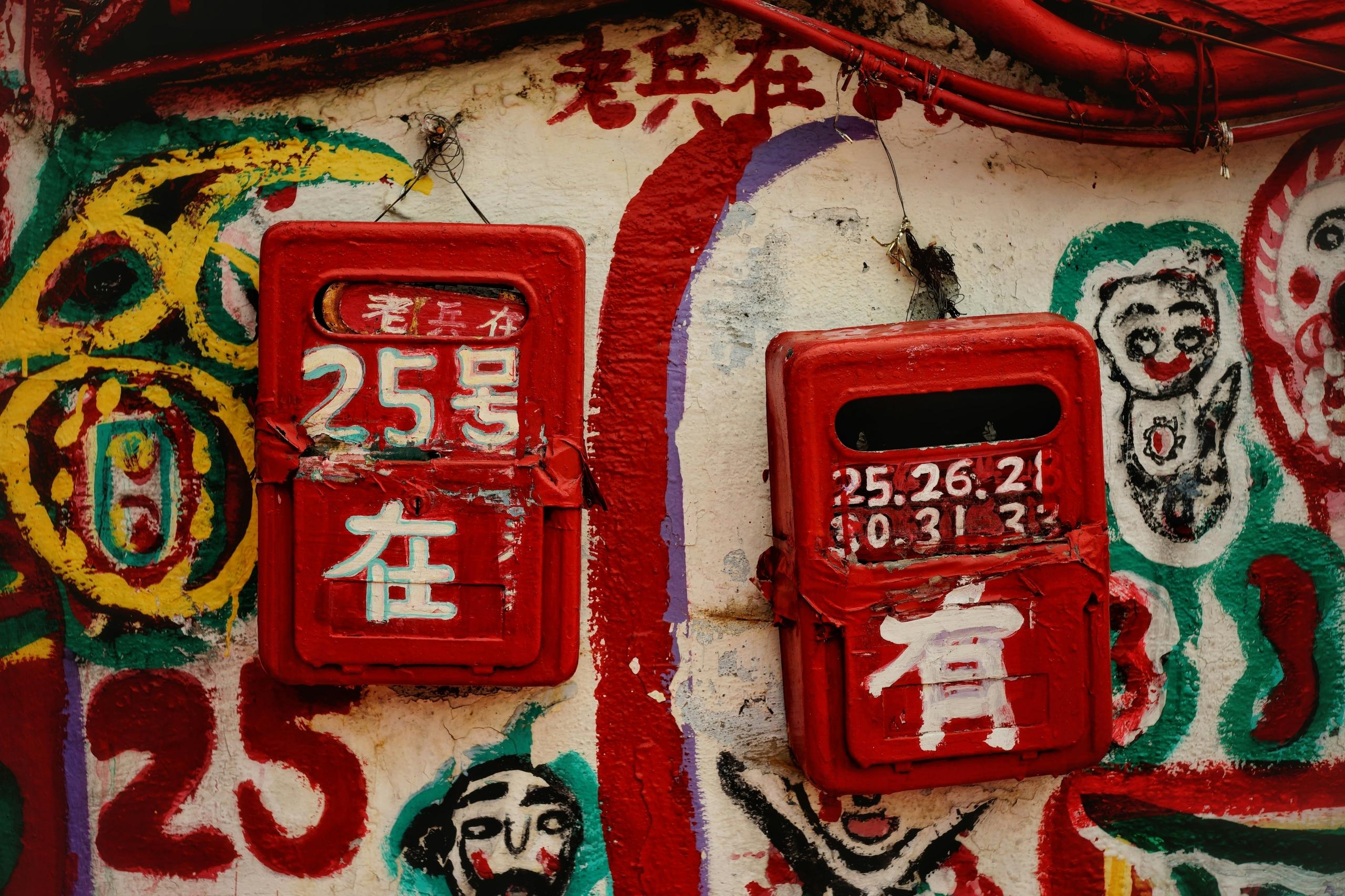From the Mandarin language to the many characters in the Chinese alphabet, there are countless ways to discover the rich history and vibrant culture of China.
One aspect that often amazes people is the incredible impact China has had on our modern-day mathematical system.
Did you know that the ancient Chinese developed a sophisticated numeral system that laid the foundation for our numerical understanding today?
The Chinese numerical system has a rich and fascinating history that dates back thousands of years. Unlike the Arabic numbers commonly used in the Western world, Zhao figures have their own unique symbols and counting system.
In this article, we will explore the evolution of Chinese numerals, uncovering the prehistoric methods of calculation and their lasting influence on mathematics.

The Origins of Chinese Numerals
Did you know that the Chinese numeral system dates back over 4 000 years?
To understand the ancient Chinese numeral system and its significance, it is crucial to delve into the history behind it. In its earliest form, Chinese numbers were represented by horizontal lines, with each line representing a unit. As the Chinese civilisation progressed, the numerical notation system evolved, incorporating vertical lines and more complex symbols.
The numbering system used by this prehistoric civilisation can be traced back to between 479 to 221 BC, a period known as the Warring States period due to the conflicts between different states. During this time of instability, remarkable advancements were made in mathematics, paving the way for the development of the Chinese integer system.
During the Qin Dynasty (221-206 BC), the Chinese numerical system underwent a significant transformation. The decimal system was introduced, and new symbols were created to represent larger numbers. This development laid the foundation for the modern Chinese numerals that we know today.
One of the crucial cities in the history of Chinese mathematics is the village of Xiao, located in the modern-day Henan province. This village was the capital of the Late Shang or Yin Dynasty, which ruled China between 1556 and 1046 BC. The Shang dynasty holds the distinction of being the earliest recorded ruling dynasty in the history of the world, and their written records provide valuable insights.
Find online maths lessons taught by professional tutors on Superprof!
The Ancient Chinese Numeral System
The significance of the village of Xiao in Chinese culture becomes evident with the discovery made by archaeologists in 1899. They unearthed thousands of relics, including artefacts made from materials such as bones and tortoise shells. These artefacts contained historical information about the quantities of various things, offering valuable insights into the numeral system used by the Chinese.
The ancient Chinese numeral system had symbols representing different numbers. Let's take a look at the symbols used for different place values:
| Place Value | Examples |
|---|---|
| Ones | 1-10 |
| Tens | 20, 30, 40, 50, 60 |
| Hundreds | 100, 200, 300, 400, 500 |
| Thousands | 1 000, 2 000, 3 000, 4 000, 5 000 |
Unlike our modern positional numeral system, the Chinese system was non-positional. In our positional system, the position of a digit affects its value, but in the Chinese system, the position mattered less than the symbols themselves. This distinction adds to the uniqueness and intrigue of the ancient Chinese numbers system.

The Unique Features of Zhao Numerals
While the number system shares some similarities with the Arabic digit system, it also possesses unique features that set it apart. One notable difference is the omission of zero in numbers. Unlike the Arabic system, which utilises zero as a placeholder, Zhao numerals do not have a symbol to represent zero. This absence of zero poses certain challenges when performing complex calculations and represents a fundamental distinction between the two systems.
Another distinctive characteristic of these historic numbers is their horizontal orientation. While Arabic numerals are typically written vertically, Zhao numerals are predominantly written horizontally. This horizontal writing style aligns with the traditional Chinese writing system and contributes to the aesthetic appeal of Zhao numerals.
One example of a Chinese numeral character is "一" which represents the number one.
The usage of these characters in everyday life is still prevalent in China today. Whether it's counting money or writing down a phone number, Chinese numerals are an integral part of everyday communication. So next time you come across a Chinese numeral character, take a moment to appreciate its rich history and significance in Chinese culture!

Translating Zhao Numerals to Arabic Numerals
As the world becomes more interconnected, the need for translating numerical systems arises. Translating Zhao to Arabic numerals presents both challenges and opportunities. While the basic principles can be understood by individuals familiar with middle-eastern numbers, the absence of zero and the horizontal writing style may require additional explanation and contextual understanding.
To translate these numbers, one must first understand the numerical values assigned to each symbol in the number system. By recognising the significance of each symbol and its positional value, it becomes possible to convert Zhao numerals into their Arabic counterparts.
The Invention of the Abacus
While the Chinese numeral system provided a foundation for arithmetic understanding, it did have limitations when it came to complex calculations. Additionally, the lack of readily available paper meant that alternative methods were needed for counting and performing calculations. This necessity led to the invention of an ingenious device known as the abacus.
The Chinese calculating machine, which we still use today, dates back to around the 2nd century BC. Similar devices were used in other prehistoric civilisations, but the Chinese abacus stands out for its close resemblance to the ones we use today. Constructed with wooden rods and beads, the calculating machine served as one of the earliest calculators in existence.
So why did the Chinese need one if they already had their number system?
The answer lies in the limitations of their numeral system for complex calculations and the scarcity of paper. This special calculating machine provided a practical and portable solution, allowing individuals to perform quick calculations with ease.
Enrolling in a mathematics lesson will enhance your skills and deepen your understanding of mathematical concepts. This will provide you with valuable knowledge and problem-solving abilities that are essential for academic success and everyday life.
Early Chinese Multiplication Tables
Multiplication tables are a fundamental aspect of maths education, and their origins can be traced back to prehistoric China. In 2008, a significant archaeological discovery shed light on the arithmetical texts from the Warring States period. The Tsinghua Bamboo Slips, as they came to be called, contained valuable information about the mathematical practices of the time.
Among the discoveries was one of the earliest examples of a multiplication table with a base of 10. When these bamboo strips were aligned, they formed a remarkable artefact that showcased the Chinese understanding of multiplication. In 2017, these bamboo strips were even awarded a Guinness World Record for being the "oldest decimal multiplication table."
Find out about free online maths resources and how to make maths fun by reading our other articles in this series.

The Lo Shu Magic Square
Magic squares have fascinated mathematicians throughout history, and China has its own unique contribution to this field. A magic square is an arrangement of numbers in a square grid, where the sum of each row, column, and diagonal is the same. The Lo Shu magic square is a significant part of Chinese mathematics and holds relevance in Feng Shui as well.
The origins of the Lo Shu magic square can be traced back to before the first century. Recent discoveries in prehistoric records suggest that the magic square played a vital role in city planning and temple designs. This ancient mathematical concept continues to captivate mathematicians and enthusiasts to this day.
Early Chinese Mathematical Texts
While some of the numerical texts from ancient China were lost due to the burning of books commanded by Emperor Qin Shi Huang Di during the Warring States period, there are still valuable remnants that provide insight into the mathematical practices of the time. One of the oldest surviving maths texts is the "Zhou Bi Suan Jing," which dates back to around 500-200 BC.
The "Zhou Bi Suan Jing" contains a wealth of information, including old value signs and numerals that offer a glimpse into the ancient Chinese numerical world. This text not only reveals the use of the famous rod and board abacus but also hints at early forms of Pythagoras' theorem. It serves as a remarkable testament to the mathematical prowess of primitive China.
The history of Chinese numerals is a testament to ingenuity and arithmetic mastery.
Their system, although non-positional, laid the foundation for our modern-day numerical understanding just like Babylonian mathematics. The invention of the abacus provided a practical tool for calculations, while the discovery of early multiplication tables and magical squares showcased their advanced numerical knowledge.
Exploring the history of primitive Chinese not only offers a fascinating journey into the past but also highlights the enduring impact of this civilisation on the field of mathematics. From the village of Xiao to the Tsinghua Bamboo Slips, each artefact and discovery adds to our understanding of the mathematical achievements of the Chinese.
As we marvel at the wonders of Chinese culture, let us not forget the incredible contributions made by this civilisation to the world of mathematics. The history of Chinese numerals serves as a testament to the power of human intellect and the enduring legacy of ancient civilisations.
















